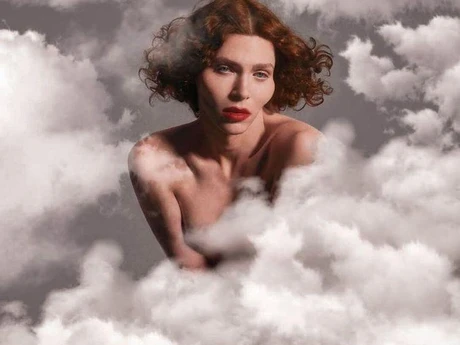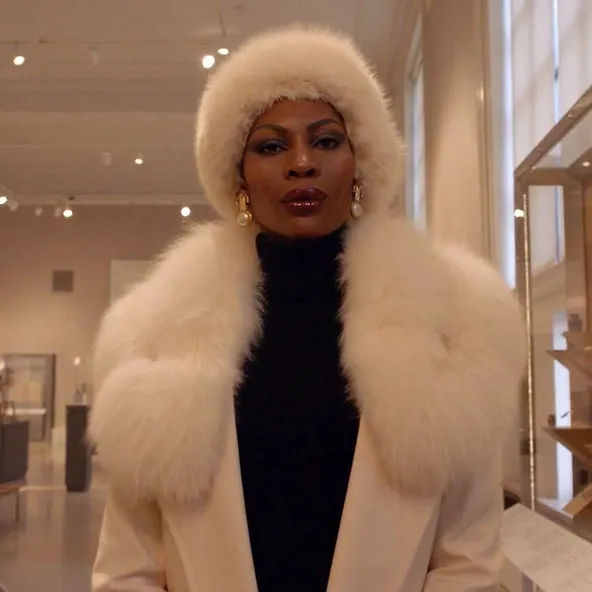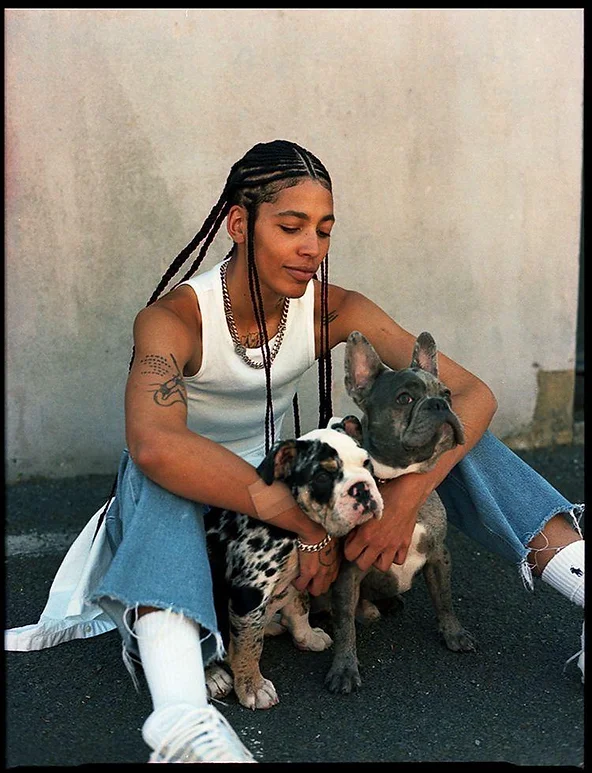
This article is mainly a compilation of works and essays from Alok Vaid Menon.
I cringe and flinch every time I hear statements like “be a man”, “man up”, “this is not how a woman should behave”. I have been in conversations with women who identify as feminists but mention all the traits of a patriarchal man when describing their ideal men. It is often conveyed with the all too famous clause “he treats me different and like his equal”, with the unsaid part of the sentence often along the lines of “because I am different”.
I do not think we are there yet when combating the patriarchy and its norms, especially in Nigeria. This is evident in our dating scene, and it’s plenty hidden and oftentimes blatant misogyny. It is also apparent when we hear shallow discussions on homosexuality ending with the phrase, “who am I to judge?” as if there is anything to judge in the first place. The loopholes in our fight against the patriarchy have again come to light with the transphobic sentiments being shared by feminists in light of Lia Thomas winning the NCAA swimming championship. You see, nothing brings cishet Nigerian feminists and misogynistic Nigerian men like transphobia. Transphobia is ingrained in patriarchal notions of manhood and womanhood.
I am deeply pained by the transphobic sentiments currently shared online. It shows a great privilege and lack of empathy to sit down in circles and discuss precious human lives so callously with little to no research as if it is a moot point. I must note that these lives are significantly prone to mental health disorders, suicide, homicide and are constantly under threat.
We do not realise it, but the current discussion on trans lives and non-binary people greatly mirrors white discussions on black people in the 18th-20th century: Are they the same as us? What is wrong with them? Should we separate them from us and give them their own ‘special categories’? I have limited my engagements on this issue and mainly discussed it with friends I can trust. I will call a spade a spade; discussions on trans lives are rarely rooted on any factual basis. Instead, what I hear constantly are people’s sentiments, biases, and emotions (does that ring a bell?). This piece is I will admit, selfish, it was written to ease my engagements, as I now have a reference point anytime I am exposed to transphobia.
The societal creation of the sex binary.
The idea that only two distinct biological sexes exist is a 19th-century colonial invention. While cultures had differentiated society into women and men, scientific developments in the 19th century saw Western scientists argue that the sex difference was purely anatomical (different brains, skeletal and nervous systems). Furthermore, scientists asserted that white people were superior because of their unique ability to distinguish between males and females. As a result, black people, indigenous people and other people of colour (BIPOC) were regarded as sex indistinguishable. In other words, when using the word “women”, scientists exclusively meant white women. Terms such as ‘lower races’ referred to BIPOC communities without reference to sex because scientists believed there were no significant sex differences between them.
In justifying their discrimination against trans people, people argue that the binary idea that people must be either male or female is just “science”. This is scientifically incorrect and undermines a rich history of scientists who proved otherwise. In the early 20th century, prominent scientists and scholars challenged the sex binary, the idea that all humans were male or female and, in essence, opposite forms. Instead, they argued that all people were to some degree nonbinary sexed. Unfortunately, the gender binary has erased this legacy.
Sex is never one hundred per cent male or female, but a blend of a complex variety of male-female components.
Scientists argued that male and female types did not exist in reality: all males had aspects of the female and females aspect of the male. They discovered that all bodies could produce both testosterone and estrogen. Scientists began to argue that one could locate and observe a mixture of the physical female and male in every human body. This period of scientific history became known as the “Theory of human bisexuality”, a school of thought that maintained that sex was NOT a binary, but rather a “scale of infinite gradations”. Otto Weininger argued that all males and females were like two substances combined in different proportions, but with either element and never wholly missing. Renowned German physician Magnus Hirschfeld elaborated on this theory, arguing that absolute representation of the male or female sex is only an abstraction, an invented extreme. In his book “The Intersexual Constitution”, he wrote that humans are not Man OR Woman, but rather Man AND Woman.

Scientists that challenged the idea of the sex binary ensured queer and trans people were not regarded as pathological minorities but rather as natural variations within a more expansive swath of humanity. For example, renowned endocrinologist Harry Benjamin, arguing for the infinite diversity of the male-female scale, stated that it was well known that sex is never one hundred per cent male or female, but a blend of a complex variety of male-female components. Thus, when people say that the sex binary is rooted in science, they really mean society. There is a long ongoing rich history of scientists that challenge the idea of binary sex by highlighting that sex is a spectrum. However, rather than fight alongside trans/nonbinary/intersex people, mainstream feminism continues to rely on a binary framework of male or female. There is nothing feminist about the sex binary, a tool created to naturalise sexism and racism.

It was not an advancement in science that led to the sex binary model; it was politics. With the Industrial Revolution, the French Revolution and new developments in religion and feminism, scientists were explicitly looking for a way to justify the sexual separation of spheres (the idea that women should have access to rights and women should remain at home as caretakers). The new sex binary permitted men to justify denying women’s rights based on nature. We can learn from the transition of a unisex model to a binary sex model that it is often not about actual differences but perceived differences. Perception is informed by culture, we take what we see as fact without questioning what we have been taught to notice in the first place.
Today people try to use the category of sex as if it is outside of politics and rooted in nature. However, they neglect that it was exclusively white male scientists who defined the criteria for nature as a way to naturalise inequality. We should always question who gets to speak for nature and why? There is no nature outside of culture; almost everything one wants to say about the body’s natural roles already has a claim about gender (cultural ideas of what men and women should be).
How the “biology’ argument puts feminism under THREAT.
Often people refuse to accept trans women by weaponising the idea of biological sex. They argue that trans women are not women because they are incapable of giving birth and menstruating like biological females. They conveniently forget how biological sex is a framework created by white male scientists in the 19th century to justify discrimination against white women and black people, indigenous people, and people of colour (BIPOC).
European male scientists concluded that the primary function of white women was to mother. She had no other gift to offer but her healthy and numerous offspring.
White male scientists argued that women were “inherently different from men in their anatomy, physiology, temperament, and intellect” and that white women “lagged behind men, much as primitive people lagged behind Europeans” in the civilisational hierarchy. German scientist Carl Vogt argued that white women’s skulls resembled black people’s skulls more than white men’s. While these scientists saw white men as unique and distinct from the other, white women were regarded as more generic and less specific.
White male scientists defined womanhood as the ability to reproduce, arguing that women’s pelvises were proof of “the promise of capable maternity”, describing women as naturally having less sexual desire (if any) than men. White women’s fundamental essence was defined as being a reproductive “racial conduit”. Women were the “sex sacrificed for reproductive necessities”. If white women deviated from their reproducing role, they were deemed criminal, unsexed, ugly and abnormal. European male scientists concluded that the primary function of white women was to mother. She had no other gift to offer but her healthy and numerous offspring.
European scientists leveraged the rhetoric of biology to naturalise discrimination against women. This was not based on legitimate science that relied on reliable data; it was often discussed in research as common knowledge. By defining women’s purpose as solely reproductive, they could justify denying women’s suffrage and women’s mobility as the laws of nature, not the result of political choices. Unfortunately, centuries later, people continue to use these rhetorics of science to discriminate against trans and intersex people. It is not science to define womanhood solely by genitalia and reproduction; it’s sexism. Womanhood is far more complex and expansive than the ability to give birth.


People who challenge gender norms are often dismissed as prioritising theory over reality. This is historically incorrect. The fact is that people worldwide have lived long outside of the western gender binary system. In her work, Nigerian scholar Dr Oyeronke Oyewumi draws from the history of her Indigenous Yoruba culture to show that the category “woman” did not exist in Yorubaland before European colonisation. She criticised the western ideology that the gender category is universal. In Yoruba society, the primary feature of social hierarchy was age, not gender.
“The invention of womanhood in Yoruba society was instrumental in establishing the subordination of a people who had previously exercised more freedom, autonomy and influence.”
Yoruba people acknowledged distinct reproductive roles without using them to establish social hierarchy and distribute power. The category of ‘woman’ only emerged from the policies and practices of the newly imposed European state. The colonial authority institutionalised the very categories of women and men defined by anatomy and hierarchy. Oyewumi argues that the creation of women as a category was one of the very first accomplishments of the colonial state.
Historically, gender-neutral gods were replaced with male ones. Although non-men had long participated in political and public life, the new colonial authority only recognised male leaders. It refused to acknowledge the existence of female chiefs, effectively excluding women from all colonial state structures. As a result, Yoruba people were forcibly assimilated into western patriarchy, which regulated marriage, divorce and pregnancy, legally defining women as second class to their husbands.
Oyewumi argues that African women were discarded to the very bottom of a history that was not theirs; the unenviable position of European women became theirs by force. The invention of womanhood in Yoruba society was instrumental in establishing the subordination of a people who had previously exercised more freedom, autonomy and influence.
The gender binary assigns different roles, statuses and power to humans with male and female genitals. We differentiate expectations from men and women regarding their behaviours, preferences and psychological characteristics, forcing populations of “human mosaics into a binary straitjacket”. Society expects males to fulfil patriarchal masculine gender roles, just as females are expected to fulfil patriarchal feminine gender roles, stifling both genders allowing none of them to express their full humanity. This is why we see many men struggling with their mental health in our society because we live in a society that punishes them for being their whole selves. I must add while gender roles have existed for millennia, the modern gender binary is a narrative of Christianity, Colonialism and Capitalism. It is time to start treating people according to their unique mosaics of humanity rather than according to the form of their genitals.
